30th May 2023
The Body Burden
Q: What is a "body burden"?
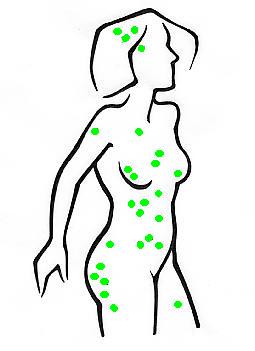
A: Toxic chemicals, both naturally occurring and man-made, often get into the human body. We may inhale them, swallow them in contaminated food or water, or in some cases, absorb them through skin. A woman who is pregnant may pass them to her developing fetus through the placenta. The term " body burden " refers to the total amount of these chemicals that are present in the human body at a given point in time. Sometimes it is also useful to consider the body burden of a specific, single chemical, like, for example, lead, mercury, or dioxin.
Some chemicals or their breakdown products (metabolites) lodge in our bodies for only a short while before being excreted, but continuous exposure to such chemicals can create a "persistent" body burden. Arsenic, for example, is mostly excreted within 72 hours of exposure. Other chemicals, however, are not readily excreted and can remain for years in our blood, adipose (fat) tissue, semen, muscle, bone, brain tissue, or other organs. Chlorinated pesticides, such as DDT, can remain in the body for 50 years. Whether chemicals are quickly passing through or are stored in our bodies, body burden testing can reveal to us an individual's unique chemical load and can highlight the kinds of chemicals we are exposed to as we live out each day of our lives. Of the approximately 80,000 chemicals that are used in the United States, we do not know how many can become a part of our chemical body burden, but we do know that several hundred of these chemicals have been measured in people's bodies around the world.
Q: Do all humans carry this chemical body burden?
A: Scientists estimate that everyone alive today carries within her or his body at least 700 contaminants, most of which have not been well studied (Onstot and others). This is true whether we live in a rural or isolated area, in the middle of a large city, or near an industrialized area. Because many chemicals have the ability to attach to dust particles and/or catch air and water currents and travel far from where they are produced or used, the globe is bathed in a chemical soup. Our bodies have no alternative but to absorb these chemicals and sometimes store them for long periods of time. Whether we live in Samoa or San Diego, Juneau, or Johannesburg, all our bodies are receptacles for a multitude of industrial chemicals. Wherever we live, we all live in a chemically contaminated neighborhood.
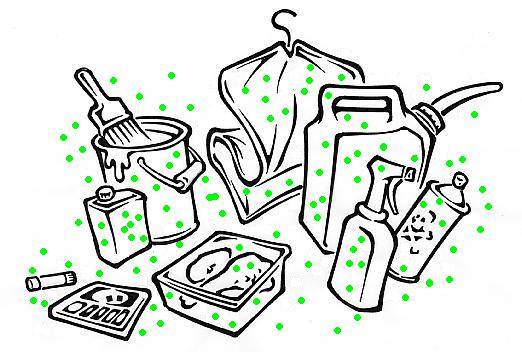
*Onstot J, Ayling R, Stanley J. Characterization of HRGC/MS Unidentified Peaks from the Analysis of Human Adipose Tissue. Volume 1: Technical Approach. Washington, DC: U.S. Environmental Protection Agency Office of Toxic Substances (560/6-87-002a), 1987.Some of the chemicals residing in our bodies are pesticides, and some are used in or produced by other forms of industrial production. Many are found in a wide variety of consumer products. Some chemicals like dioxins and furans are created unintentionally by industrial processes using chlorine and from the manufacture and incineration of certain plastics. Scientists estimate that there are many other unintentionally created by-products which have not yet been "discovered" since no tests have yet been developed that would fully identify or describe these by-products.
Q: How did this happen? How have I been exposed?
A: Humans are exposed to chemicals through the food we eat, the air we breathe, and the water we drink and bathe in. Chemicals often coat the surface of dust particles, which we handle or inhale. Contaminated dust is an especially important route of exposure for children who commonly put their hands into their mouths. We are also exposed to hundreds of chemicals in everyday products we use. Paints and varnishes, gasoline, glues, cosmetics, clothes dry-cleaned with solvents, plastic food containers, and home and garden pesticides are just a few examples. The chemical landscape created as a result of intensive and continuing chemical use during the 20th century has been internalized. Because the chemicals found within our bodies are not labeled with return addresses, it is difficult to identify where they come from.
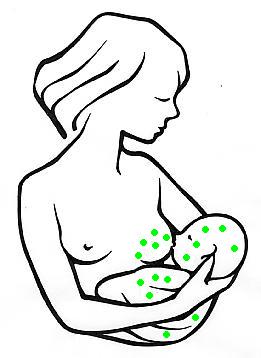
For example almost all of the dioxin found inside your body got there from eating contaminated food. However, it may have originated in a local medical waste incinerator or it may have been created by a distant, chlorine-based, paper manufacturing plant located thousands of miles from your home. Whatever its source, somewhere it entered the food chain and made its way into the food you ate. Similarly, a pesticide found inside your body may have come from pesticide spraying done at a local school, in your garden or kitchen, or it may have arrived on foodstuffs grown with pesticides in the U.S. or abroad. Its origin will be difficult to identify.Another source of exposure is the chemical body burden of our mothers. During pregnancy, the chemicals stored in a woman's body have the ability to cross the placenta where they may cause harm. Some chemicals from a mother's body are also mobilized and transferred to the breasts as she produces breast milk. These chemicals are then transferred to the baby during breastfeeding. Breast milk remains the best food for babies, as recent studies show, because of its immunological, nutritional and psychological benefits. The fact that industrial chemicals have contaminated breast milk is tragic. Ironically, breastfeeding appears to offset some of the damage created by contaminants during fetal development. Some of the chemicals we receive from our mothers in utero and through breastfeeding remain with us for years, an unintended legacy that our mothers pass on as their body burdens become our own.
Q: What is the evidence for body burden? How long have we known about this problem?
A: It has been known for centuries that chemicals can enter the body and cause health effects. Since the middle of the 20th century, scientists have been able to detect and measure chemicals in wildlife and humans and sometimes link these chemicals to health outcomes. For example, in 1944 researchers found residues of DDT in human fat, and in the early 50's, naturalists rightly concluded that DDT was directly responsible for thinning eggshells and declining populations of bald eagles and other birds. In fact, at about the same time, DDT was detected in Antarctic penguins living an extremely long distance from where DDT was being used.
Since then, analytic techniques have improved and many other chemicals have been detected in human and wildlife tissues. For decades, tests for some substances that make up the total chemical body burden have been conducted by government agencies around the world. These hundreds of studies include analyses of adipose (fat) tissue, breast milk, semen, blood, or urine for chemical content, documenting the amount and kinds of chemicals found. This website gives a list of some of these body burden studies.
Q: What are the health effects of this body burden?
A: Chemicals can have different effects in people or in wildlife, depending on the amount, timing, duration, and pattern of exposure as well as the properties of the specific chemical. Chemicals can have toxic effects through a variety of mechanisms.
For example, sometimes a chemical attacks and damages or kills cells or tissues in the body. Some chemicals attack the genetic material in the nucleus of a cell, causing damage directly to the DNA, which may create an inheritable defect that is passed on to the next generation. This can lead to gene mutations, which can set in motion a sequence of events leading to cancer, birth defects, developmental or reproductive disorders. Chemicals that cause cancer are called carcinogens. Chemicals that cause birth defects are called teratogens. Chemicals that damage the normal development of the fetus, infant, or child, or damage our reproductive tissues are called developmental/reproductive toxicants. Some chemicals can cause damage through their ability to interfere with normal hormone function. These chemicals are called endocrine disrupters.
Through these various mechanisms, toxic chemicals can cause a long list of health problems. They include, for example, direct damage to the lungs, liver, kidney, bones, blood, brain and other nerves, and the reproductive systems. There are hundreds of adverse health effects that can arise from exposures to chemicals or metals. These potential effects include cancer; high blood pressure; asthma; deficits in attention, memory, learning, and IQ; Parkinson's-like diseases; infertility; shortened lactation; endometriosis; genital malformation; peripheral nerve damage; and dysfunctional immune systems. For example, dioxin is a carcinogen and fetal exposures to dioxin interfere with normal development, including the immune system. Fetal exposure to polychlorinated biphenyls (PCBs) is related to behavioral and cognition problems. DDT exposure has been related to women's inability to produce sufficient breast milk. The immune systems of children in some areas of the far north are unable to produce enough antibodies to make vaccinations effective. Since these children and their mothers carry large chemical body burdens, a chemical link to this problem is likely. Fetal exposure to mercury causes attention, memory, and learning problems later in life. Brain development is also impaired in fetuses and infants exposed to lead.
Q: Are there special health effects for children?
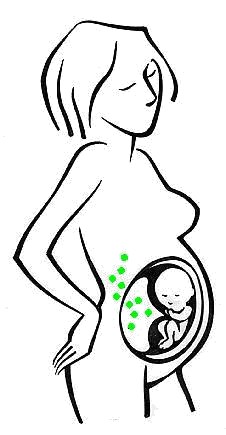
A: Developing or immature tissues are far more susceptible to chemical exposures than adult tissues. Development is a time of special vulnerability. It is a time of very rapid replication and differentiation of cells - the latter being an incredibly complex and vulnerable process.
This means that the developing fetus, infant, or child may suffer harmful impacts from relatively small exposures that have no measurable impacts on adults. So, for example, fetal exposures to chemicals in amounts that are safe for adults may result in birth defects or abnormal brain development. For this reason, it is not only the amount of the exposure that is important, but the timing of the exposure. Unfortunately, few of the chemicals to which we are regularly exposed to have undergone sufficient testing to fully understand whether or not they might be harmful to a fetus or child.
Hormones play extremely important roles as they help to direct the development of the fetus, infant, and child. Of course, hormones are also important in adults, as they are crucial for normal functioning of many bodily systems. What is amazing about hormones is that they are present and active in only tiny amounts, yet these tiny amounts produce major, major effects. Most importantly, exposure to an endocrine disrupter at a low level during a critical time in development can have lifelong impacts. For example, the developing fetus may mistake a foreign chemical for a hormone, and this may, in turn, cause an incorrect "signal" to be sent to developing tissues. These early mistakes can permanently damage the baby's developing immune, reproductive or nervous systems. Most of the confirmed evidence of the importance of endocrine disrupters comes from wildlife studies, but more recently, evidence for impacts in humans has also emerged.
Q: Can the links between body burden and illness be proven?
A: Of the more than 80,000 chemicals in commerce, only a small percentage of them have ever been screened for even one potential health effect, such as cancer, reproductive toxicity, developmental toxicity, or impacts on the immune system. Among the approximately 15,000 tested, few have been studied enough to correctly estimate potential risks from exposure. Even when testing is done, each chemical is tested individually rather than in the combinations that one is exposed to in the real world. In reality, no one is ever exposed to a single chemical, but to a chemical soup, the ingredients of which may interact to cause unpredictable health effects.
The amount of data on body burdens available in the U.S. and the world is extremely limited, particularly compared to the voluminous data we have for chemical levels in air, water, soil, food, and wildlife. Most population-wide body burden data we do have covers only a limited number of chemicals.
Concerning the chemicals that have been measured, there is good news and bad news. The good news is that in several cases, public interventions have resulted in primary prevention, the lowering of the public's exposure, and the lowering of body burdens. For example, the removal of lead from gasoline and the elimination of lead from most kinds of paint have resulted in a marked decline in the lead body burden of the general population in the United States. Since lead causes lowered IQ in exposed children, this reduction in body burdens is a hopeful sign.

The bad news is that there are still groups of children who remain at significant risk from impaired brain function because of elevated lead levels. Many of them live in urban environments where they are exposed to lead from numerous sources, including leaded paint in houses, old industrial facilities, and contaminated soil. For PCBs, current background levels cause neurodevelopmental deficits in children. For dioxin, the general U.S. public carries a current body burden near or above levels causing adverse effects in animal tests.
The study of disease rates and causes in humans is called epidemiology, the study of patterns of illness among groups of people. Because epidemiology is such a blunt instrument, it will almost never be able to tell us if a specific chemical causes a particular human disease or health effect. Since we regulate, and thereby reduce exposures, on a chemical-by-chemical basis, epidemiological studies will almost never succeed in producing primary prevention - the lowering of human exposures to environmental chemicals - because epidemiology cannot identify the specific chemical that is causing the disease.
Thus, definitive proof for a linkage between a specific disease and a specific toxic chemical is almost always lacking. Absent this, we can use data from laboratory and wildlife studies to make useful predictions about human health, and these predications are often borne out by current statistics about human birth defects, infertility, developmental delays, and increasing rates of certain cancers.
Q: How do I find out about my own body burden?
A: In general, there is no readily accessible way to know. Even if you could learn about your own body burden, you may not find the information useful. Your doctor in general cannot prescribe treatments that will lower the level of chemicals in your body. Finding out about your community body burden, however, is useful, and can lead you and your neighbors to take actions to lower your chemical exposures.
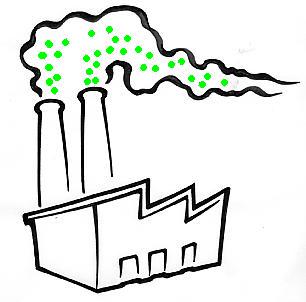
Government agencies, health care facilities, or other laboratories do not routinely offer body burden measurements. Most of what we know about body burdens of contaminants comes from limited studies of a few contaminants, conducted by government agencies on selected groups of people. These studies often break down the analysis by sex, age, and race, which provides useful information about population-wide averages. But population-wide averages cannot predict body burdens for individual people. Moreover, these population studies are usually limited to just a few of the contaminants to which people are regularly exposed.
In general, you can find out more about the chemicals in the fish you eat than you can discover about the chemicals stored in your body. In other countries, Sweden for example, body burden monitoring is more extensive, and the government tracks how well it is doing in reducing people?s exposures to environmental chemicals by watching the body burdens go down. Body burden monitoring gives them a report card on their primary prevention activities. Body burden monitoring also can serve as an early warning system that identifies new chemicals that are increasing in people, and that the government should pay attention to.
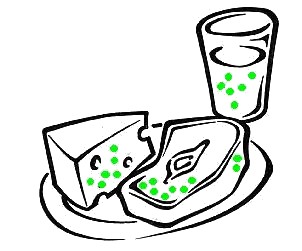
Since we have the right to know about what chemicals are in our air, water, soil, food and products we use daily, it makes sense that we should have the right to know about the chemicals we carry in our bodies. We should take a lesson from the Swedes and establish extensive community-based body burden monitoring programs around the world.
Q: What does a body burden test tell me about my own health?
A: Body burden testing tells us something about what chemicals we have been exposed to. It usually tells us almost nothing about whether those exposures are responsible for any health problems. However a single body burden test, or, better yet, community-based monitoring, may indicate a great deal about the overall state of our environment and public health.
Q: How can I get these chemicals out of my body?
A: At this time there is no general agreement about useful or safe methods for reducing body burdens. The best course is long-term prevention. Contamination of future generations by toxic chemicals can be prevented by working together to: 1) eliminate the most dangerous persistent chemicals that bioaccumulate (concentrate more as they get higher in the food chain); 2) develop alternative production methods that use non-toxic materials, and 3) ensure that communities, national governments and international agencies take a precautionary approach when it comes to chemicals released into our air, water, and soil. Please look at the Learn More section on this website that lists organizations you can contact to learn how to participate in campaigns based on these ideas.
Changes in lifestyles may prevent some exposures. Recent studies of chemical body burdens in the state of Washington have found that children who ate organic food and who were not exposed to pesticides in their homes had significantly lower body burdens.
Some limited research shows that body burdens of some contaminants stored in fat can be lowered by a combination of special diets, exercise, and saunas. But data are very limited and preliminary. When some metals, like lead or mercury, are present in the body at fairly high levels, "chelating agents" are sometimes used to lower the total body burden of that particular metal. However, "chelation" treatments are somewhat controversial with potential side effects and have not been proven to consistently reduce toxic impacts of exposure. For example, one study showed that a chelating agent used in children with moderately elevated lead levels did not improve neuralgic performance.
Q: Don't government regulations protect my family and me?
A: Current regulations were developed well in advance of the new science that shows that small exposures to chemicals - once considered harmless - are indeed capable of subtle cellular changes. New evidence shows that these subtle changes can raise the risk for birth defects, cancer and other health problems. In addition, the regulations now in place are not designed to look at exposures in the context of the full burden of chemicals we carry. No one is looking at the health effects of the cumulative total.
U.S. regulations are the result of long, involved political processes in which special interests exert considerable influence. Industries with significant financial interest in the continued use of a particular product or chemical have historically been quite successful in limiting regulatory controls. More information about the chemical body burdens of individuals, particularly exposed communities, and national populations could help us make better decisions about which products we want to use, which food we want to consume and what laws need to be in place to protect us.

